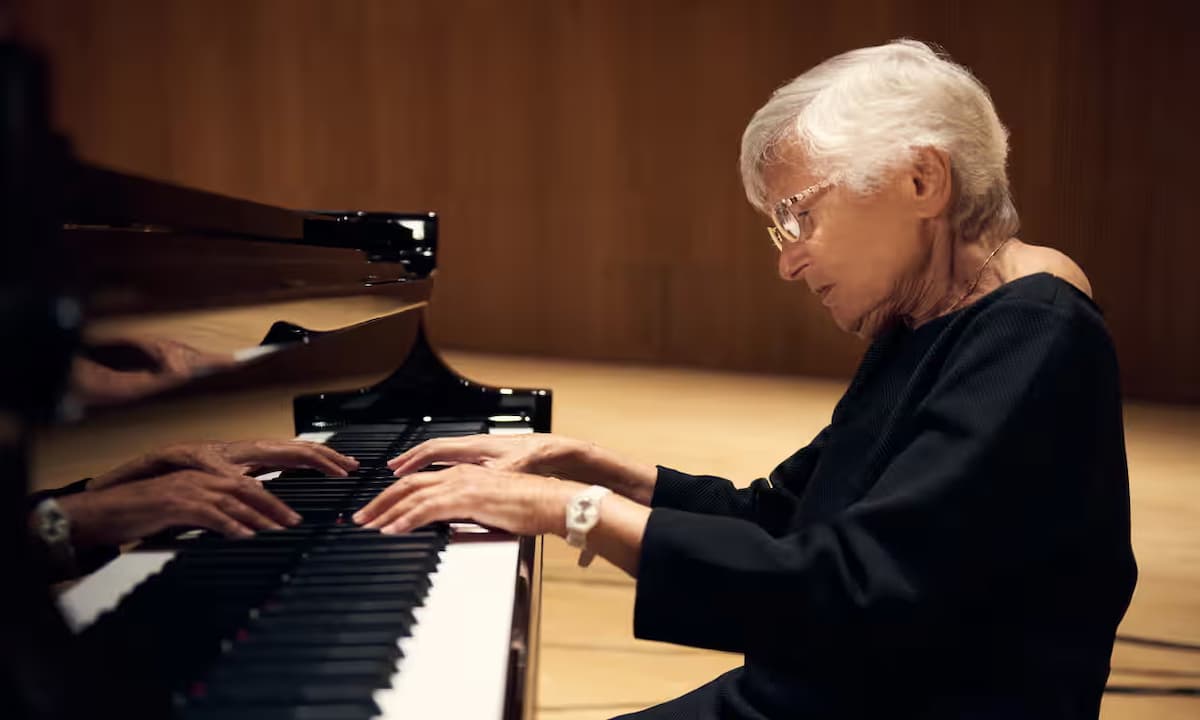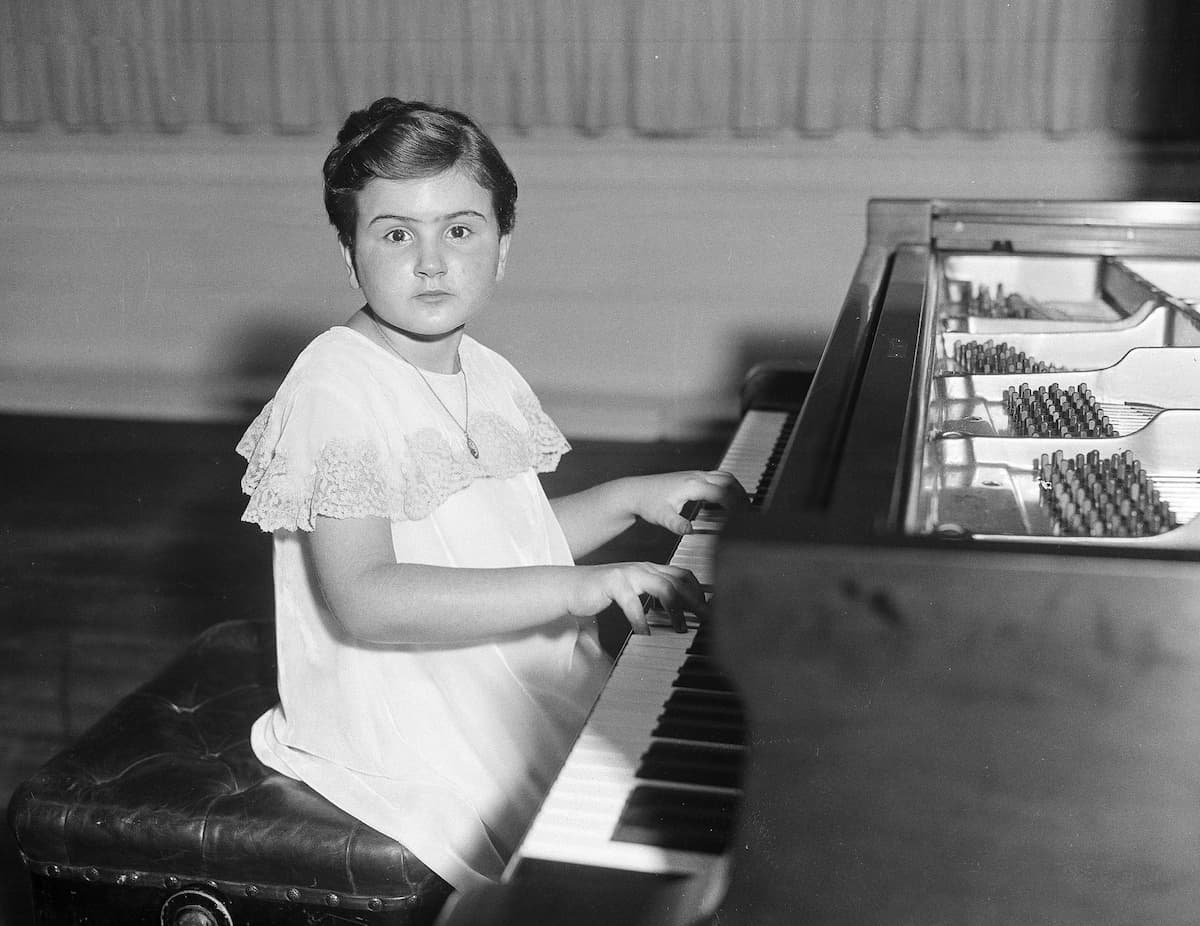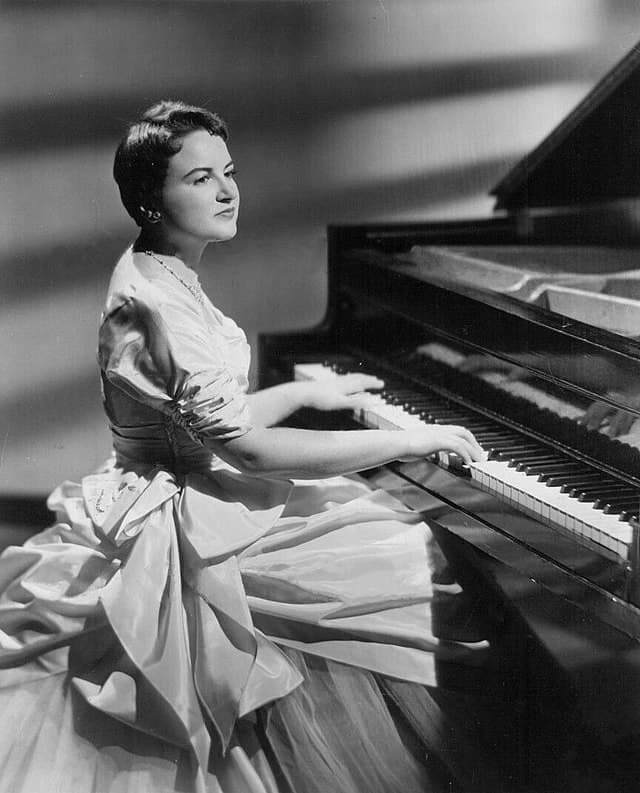Ruth Slenczysnka must be one of the most interesting pianists alive today. She certainly has a story unlike any other: she studied piano with Rachmaninoff as a little girl – became an international musical sensation – abandoned her performing career – returned to it after a divorce – played for presidents – dueted with Harry Truman – spent a long career as an educator – and just last year put out an acclaimed album for the Decca label. And that’s barely scratching the surface of her list of accomplishments!

Ruth Slenczynska © Meredith Truax/PA
Here are thirteen facts about the incredible, inspiring life and career of pianist Ruth Slenczynska:
1. Ruth Slenczynska was born on 15 January 1925 in Sacramento, California, to a Polish violinist named Joseph and his wife. Joseph had been a leader at the Warsaw Conservatory before emigrating, but he was deeply frustrated that his performing career had never blossomed in the way he’d hoped it would. He became obsessed with living vicariously through his gifted daughter.
2. Joseph abused Ruth. When she was just a toddler, he implemented a strict study routine. Eventually, she was forced to play nine hours a day. She told CBS This Morning in 2022, “When I was practicing, and hearing from the street my sisters’ calls as they were playing with other kids, I wanted to be one of those kids who played. And if I didn’t practice, I was chased around the apartment with a stick.”
Pianist Ruth Slenczynska on her life in music
3. By the age of four, they’d relocated to Europe so that she could access the best teachers and rub shoulders with the most influential musicians of the day. The list of pianists who young Ruth Slenczynska studied with or was mentored by is dizzying, and includes Schnabel, Cortot, and Hofmann.
4. She gave her first concert at four, her recital debut at the age of six in Berlin, and her orchestral debut at eleven in Paris. Not surprisingly, she was hailed in the press as the second coming of Mozart.
A Five Year Old Prodigy (1930)
5. In 1933, when she was only nine years old, she filled in for Sergei Rachmaninoff when he was indisposed, duplicating his program. Afterward, he called her and invited her to play for him. Understandably, she was terrified. He calmed her down by showing her a picture of his motorboat and imitating the noise of its engines, and she was able to play for him. In gratitude, he gifted her a little Fabergé egg, which even today she wears as a necklace. She spent two years learning from him.

8-year-old Ruth Slenczynski makes her American debut in a piano recital in New York, Nov. 13, 1933 © WNYC
6. She performed for – and played with – President Harry Truman, who was an amateur pianist himself. When the interviewer on This Morning asked her how playing with Truman was, she laughed and said, “Good! Really good! And he was so personable… I thought he played very musically.” Later in her career, she also performed for Kennedy, Carter, and Reagan.
7. When she was fifteen, the pressure of a performing career got to be too much. She gave it up, ran away from home a few years later, and enrolled at the University of California. In 1944, the year she turned nineteen, she met and married a fellow student named George Born. They stayed together until 1953, when they were divorced.
8. In order to make ends meet as a newly single woman, Slenczynska began teaching piano, and eventually she returned to the concert platform after an absence that had lasted for more than a decade.
Ruth Slenczynska talks and plays two Rachmaninoff Preludes (1963)
9. She wrote a memoir in 1957 titled Forbidden Childhood about the abuse she’d endured as a child. A few years later, she penned a second book, this one called Music at Your Fingertips: Aspects of Pianoforte Technique.
10. In 1964, she joined the staff of Southern Illinois University at Edwardsville, a town just across the river from St. Louis, Missouri. There she met a political science professor named Dr. James Kerr. A few years later, she married him. Decades later, she referred to him as the love of her life. He died in 2001. They never had any children.

Ruth Slenczynska, c. 1957
11. One of her students, a pianist and teacher named Shelly Moorman-Stahlman, welcomed Slenczynska into her family. According to This Morning, Moorman-Stahlman and her husband welcomed Slenczynska into their home, and today they all live together in Pennsylvania.
12. Slenczynska released her beautiful album “My Life in Music” on the Decca label in 2022, at the age of 97, sixty years after she last recorded with them. It features lovely, touching performances of music by Rachmaninoff, Chopin, Bach, Debussy, and Barber (a friend!).
Ruth Slenczynska – My Life In Music (album trailer)
13. When she was doing press for the new album, she told NPR, “You don’t become a pianist until you’re past the age of 60. And then you should have something to say that’s worthwhile. If you don’t, forget it.” For over ninety years, Ruth Slenczynska has always had something to say.
For more of the best in classical music, sign up for our E-Newsletter

I think this is lovely. She’s so inspiring!
My parents were good friends of Ruth Slenczynska when she was teaching at Southern Illinois University, just across the Mississippi River from St. Louis.
She and her husband Jim joined my parents on a rail trip around Switzerland that I promoted for my fledgling travel company, The Society of International Railway Travelers.
And she and Jim were among the friends who came by to pay their respects at my parents’ house in St. Louis following my father’s death.
In the early 1970’s Ruth Slenczynska was the guest of the U.S. Department of State and toured several countries as part of a cultural exchange concert tour. I was a young Foreign Service Office in Iran at the time and had the privilege of escorting her around the country for several performances where she was very well received. She was never put out by strange pianos, sometimes haphazard arrangements or local customs. She carried with her a mute keyboard so she could practice anywhere and anytime and it was always entertaining to try to explain to airport security what it was. Once she was asked to demonstrate and, with good humor, gave a quick, silent concert before being allowed to board. Neither I nor anyone in the security line had any idea what she played. At the tour’s end, her plane was delayed and she spent the evening in our home where my wife served a very eclectic dinner made up of a wide variety of most anything edible, she found in our kitchen cupboards.